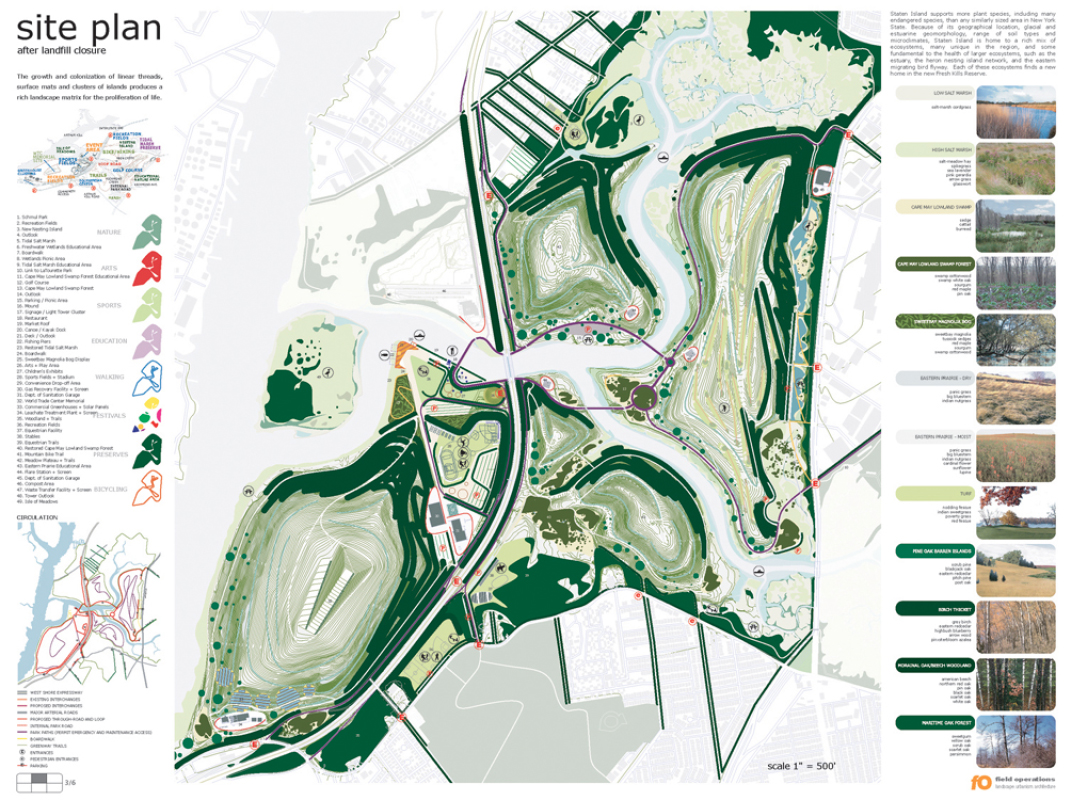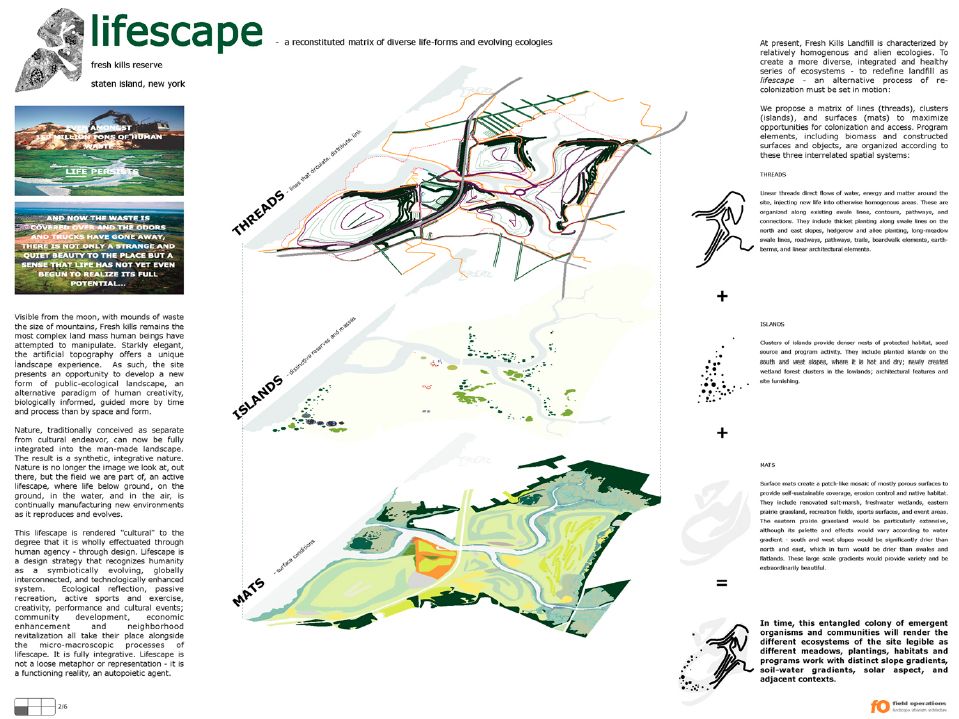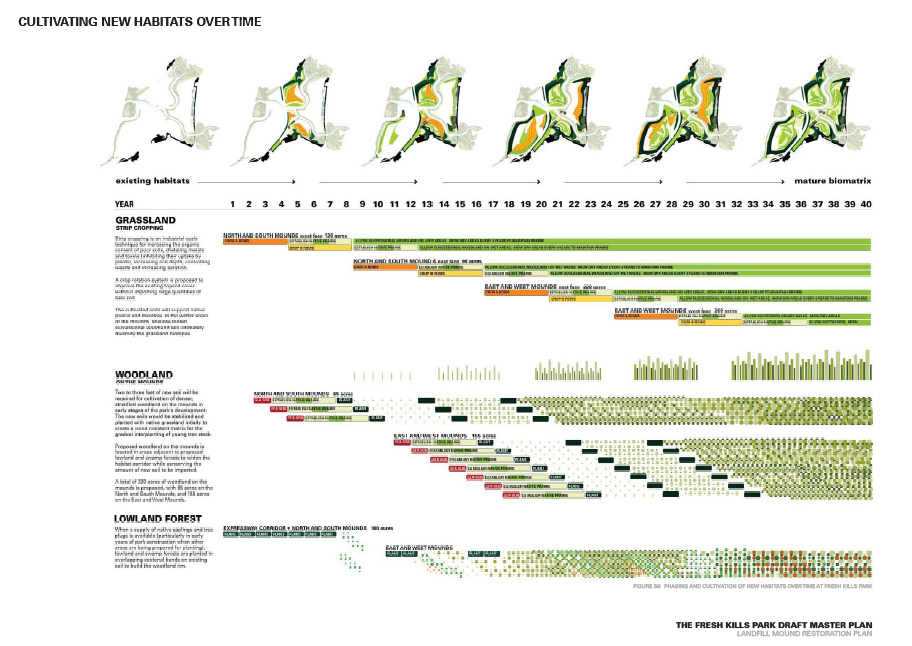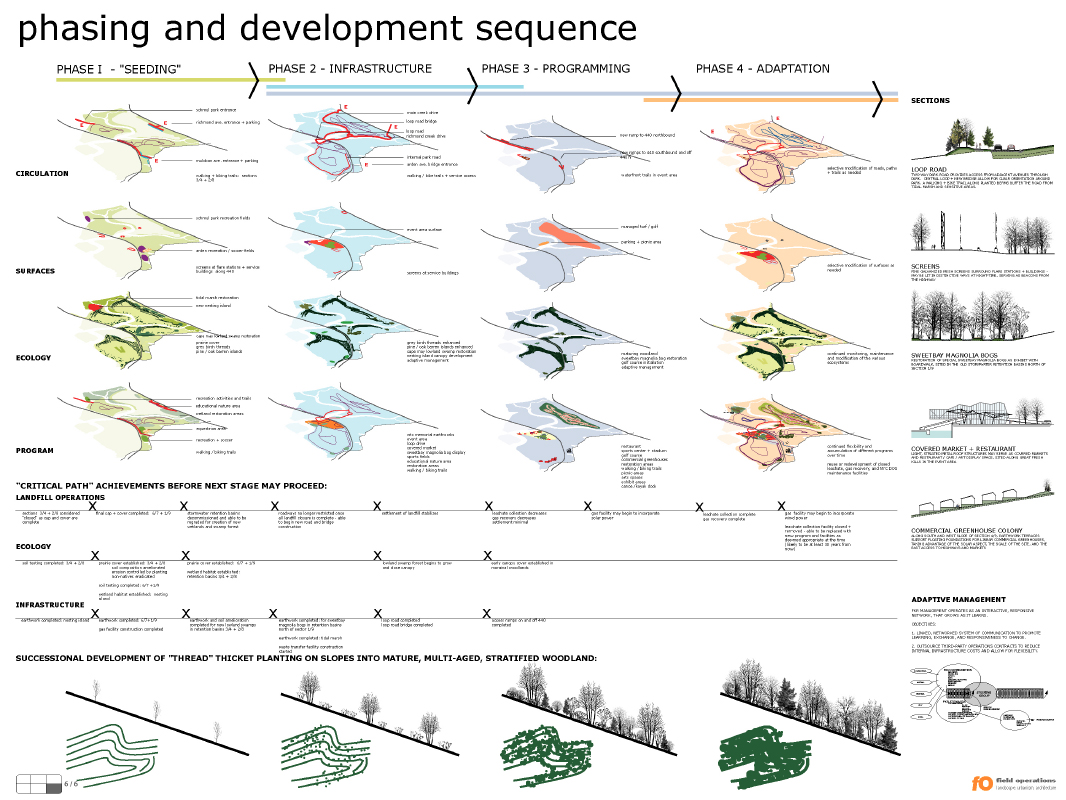I have argued that in bringing together landscape design, infrastructure, and the concept of the cyborg, a framework emerges that enables land- scape designers to shape future landscapes based on the integration and synthesis of human and non-human actors as well as biotic and abiotic processes. The three examples in this article illustrate how the profession is already (knowingly or unknowingly) working within this framework. Purposefully designed as co-dependent socioecological networks, these projects transform and choreograph landscape processes across multiple spatial and temporal scales. This results in new spatial and material conditions, exchanges, and temporalities that enrich the experience of everyday life; promoting an aesthetic that is predicated on relationships between dynamic things and systems, not static, single objects alone. (…)
Taken together, the design approach outlined in this article offers tremendous opportunities for the discipline of landscape architecture. The cyborg challenges us to reconsider our relationship with the environment and technology, thereby prompting designers to reimagine the physical nature of these metabolic interactions. An overemphasis on control and efficiency gives way to dynamic and open-ended linkages between people’s intentions for the landscape and the non-anthropogenic forces at work. By structuring non-hierarchical relationships and co-evolutionary processes, it is possible to create more sustainable and resilient interactions among all elements, actors, and systems that make up complex socio-ecological systems. In doing so, cyborg landscapes aspire to create multifunctional landscapes that do not simply operate in the present, but learn from experiences in order to adapt and grow smarter over time.
Kate Orff + SCAPE, Oyster-tecture Gowanus (2010)




































































































